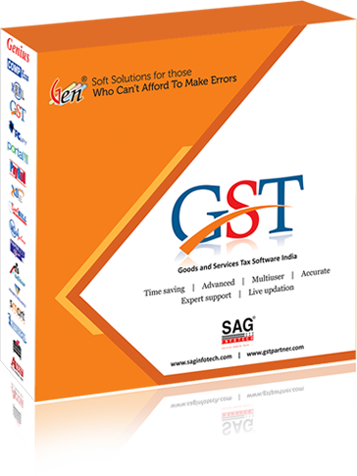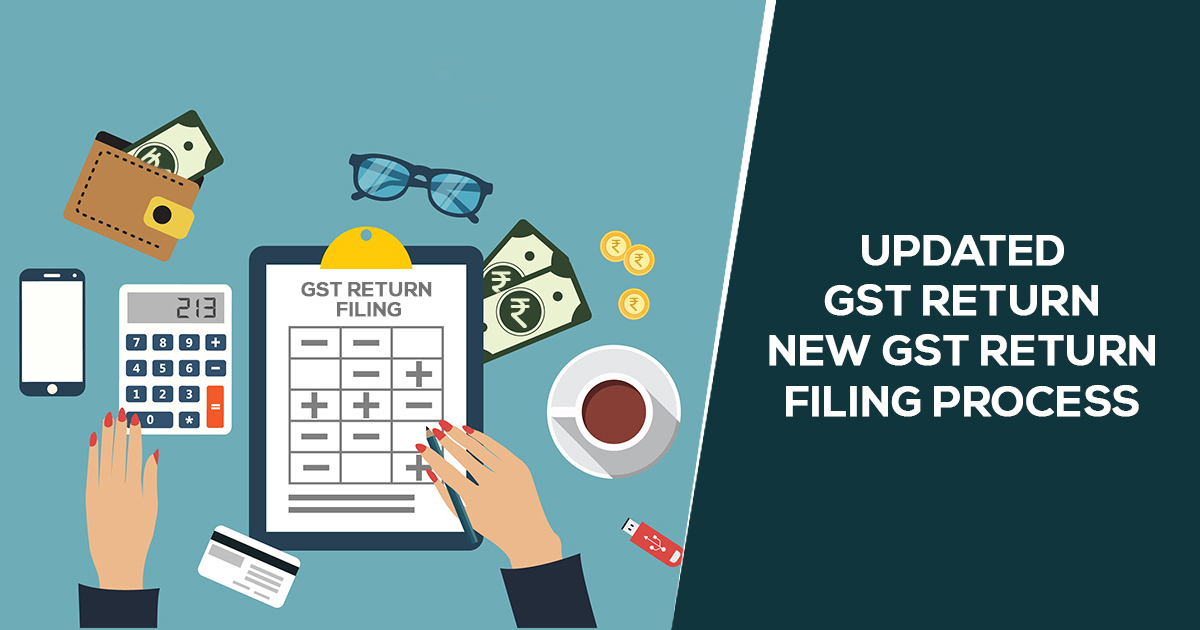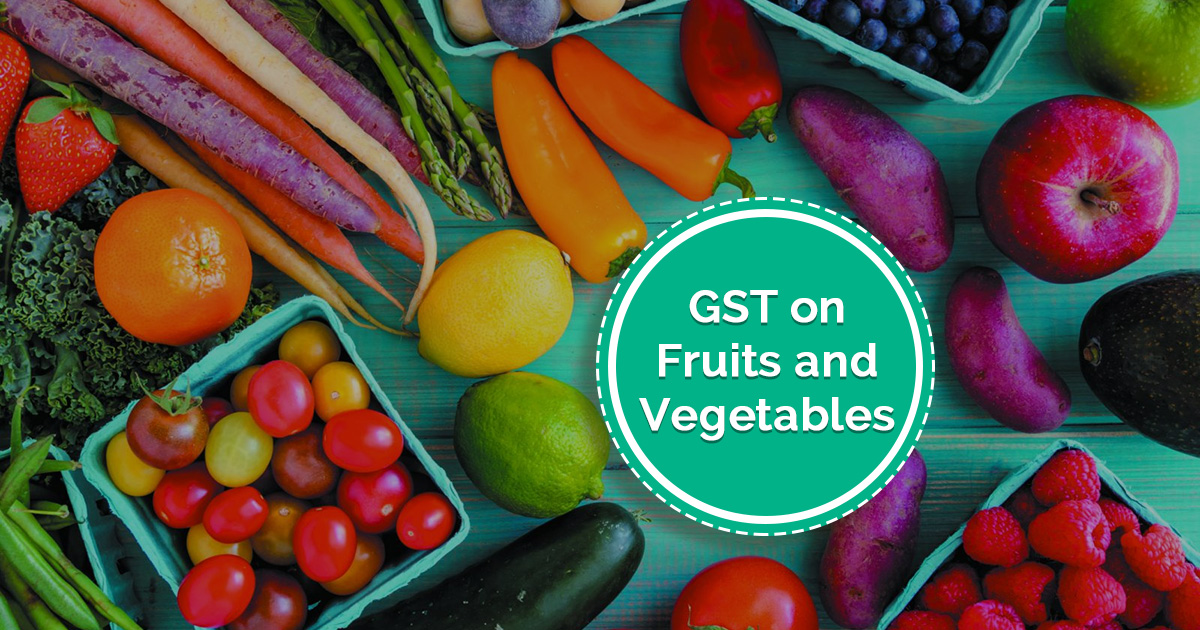Contents
Important Points Covered In Updated GST Return Filing Process
The GST council is discussing to revise return forms and return filing process as soon as possible. The GST Council has accepted the framework of furnishing the return, which is now the topic of discussion of parliament sessions. The new return formats were published in public with a series of reviews and stakeholders consultation by the government. The government has named the new return furnishing process as the ‘Sugam’ and ‘Sahaj’ which also stand for simple and easy.
The proposal is likely to be rolled out by 2019. While experts are considering the new GST return filing proposal and sharing the reviews. Chirag Mehta, the Bombay Chartered Accountants‘ Society has published his discern over the proposal and mentioned for considering on behalf of the layman terms.
GST Return Proposal Highlights:
Business-Turnover More Than Rs. 5 Crores:
Businesses will furnish monthly return before or on 20th of the following month.
Business-Turnover Below and equal To Rs. 5 Crores:
Such businesses will pay taxes every month but have to furnish quarterly returns.
Input Tax Credit:
In a respective month, the buyers can request for the Input Tax Credit in respect of invoices uploaded on or ahead of a 10th day of the month.
Invoice Upload:
The supplier can upload the invoices any time in a month-long period and these invoices will be visible to the buyers to match and claim for ITC.
In the gap of transition, when the new return process comes into effect, buyers will be able to get input tax credit benefit using a self-declaration mechanism. The ITC against the supplies which are not uploaded in term of invoice by the supplier will also claimable under ‘ITC for missing invoices’ section provided on the GST network.
The taxpayer is able to make changes in the return form two times in a provided tax period.
Also Read: GST eWay Bill Not Required within 50KM For Job Work in Rajasthan
It will take six months to cover the transition period, once the process is introduced. In the newly introduced process, only the supplier could upload the relevant documents, as against the previous process where it would depend on the buyer as well to upload the purchase invoices.
Mehta further said, “Previously, the supplier would get missing invoices or incorrect invoices as a statement and this ended up being a month-long process. Under the proposed scheme, the document flow will be from the supplier to the buyer. The buyer’s role is to keep an eye on missing and incorrect invoices and prompting the supplier to rectify them. Effectively, there’s no matching but a continuous monitoring by the buyer.”
Considering the invoices being provided by the supplier, the buyer will be able to get auto-calculated information regarding the input tax credit eligibility.
Easy Guide: New GST Return Filing Process
The GST council has made a continuous effort for simplifying the GST filing process and all the processes related to GST filing in order to fetch the utmost benefit of it and improve the Revenue collection. The GST tax filing could be implemented to the fullest only if the process is made simpler. So now, GST council has come up with the second phase of GST with greater simplification in several areas of compliance.
Read More: Infosys Design New GST Return Forms For Traders: Roll Out in 6 Months
DETAILS OF THE PROCESS
The New GST Return Filing Process – Based on the Thumb Rule ‘Upload-Lock-Pay’.
Upload
This is related to the Suppliers. The process is that the suppliers could continuously upload the invoices at any time during the Month and the uploaded invoices are instantly visible to the buyers.
Lock
Once the invoice got uploaded by the Supplier, the buyer has to Lock the Invoice. Locking of the invoice reflects that the Buyer has confirmed the transaction and the goods or service present on the invoice is correct. The invoice which has been uploaded by the supplier and locked by the buyer would be considered to be fit to be claimed for the Input Tax Credit by the Buyer. The Buyer has been facilitated as he after the supplier has uploaded the invoice, could at any time lock the invoice before filing GST return for that period.
Deemed locking – The buyer has been given the facility of ‘deemed locking’. The invoices which have been uploaded but are not marked as either pending or rejected and are lying in numbers with the buyer then, they would automatically get locked once the buyer files the GST returns. Such locking of the invoice is called Deemed locking.
Note –
Once an invoice is locked by the buyer, the supplier couldn’t make any amendment in the invoice.
A credit or a Debit note would be required to be issued by the supplier for making any amendments to the invoices. In another case, if a buyer has wrongly locked an invoice, it could be unlocked only by the recipient and the input Tax credit needs to be reversed which has been claimed earlier.
Reject
There are scenarios like if the Supplier enters the GST identification number of the buyer wrongly, then the invoice would appear for some other taxpayer who is not the ultimate recipient of the supplied goods. In such a scenario, the invoice could be rejected by the taxpayer.
Read More: Impact of GST on Jobs: GST Results Job Loss For MSME Industry
Pending
There are circumstances under which a buyer could mark the uploaded invoice as ‘Pending’
- When the buyer has actually not received the supply
- When the buyer feels that there are some amendments required in the invoices
- When the buyer is in dilemma, whether to take the input tax credit on the invoice now or later
- A buyer cannot encash the income tax return on the pending marked invoices. Also, the person filing Monthly returns is the only who has been offered the facility of marking the invoice as pending. This facility is not applied to the one who is filing the returns on a quarterly basis.
Pay: Last step in the Thumb rule
The process of GST return is complete when the invoices are uploaded by the supplier and locked by the buyer. The eligible Taxpayer would automatically be paid the input tax credit and thus the process ends. The GST liability would be based on the invoices uploaded by the supplier. Thus, the new GST return would be auto-populated, thus ensuring that manual effort is now least required for filing the GST return. The facility of ‘Locking of invoices’ by the buyer has reduced their dependability on the suppliers, as to whether they file the Tax returns or not.






